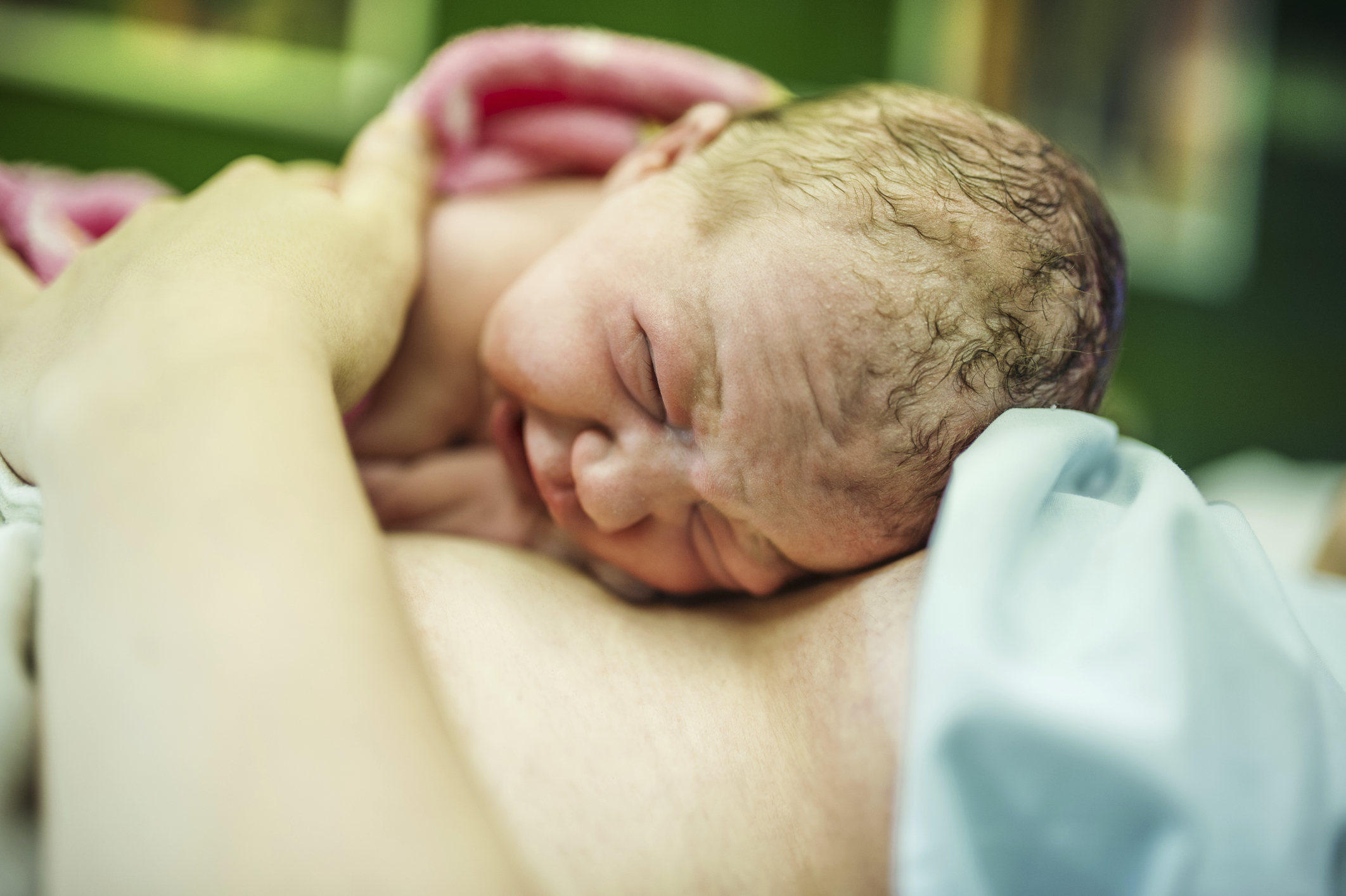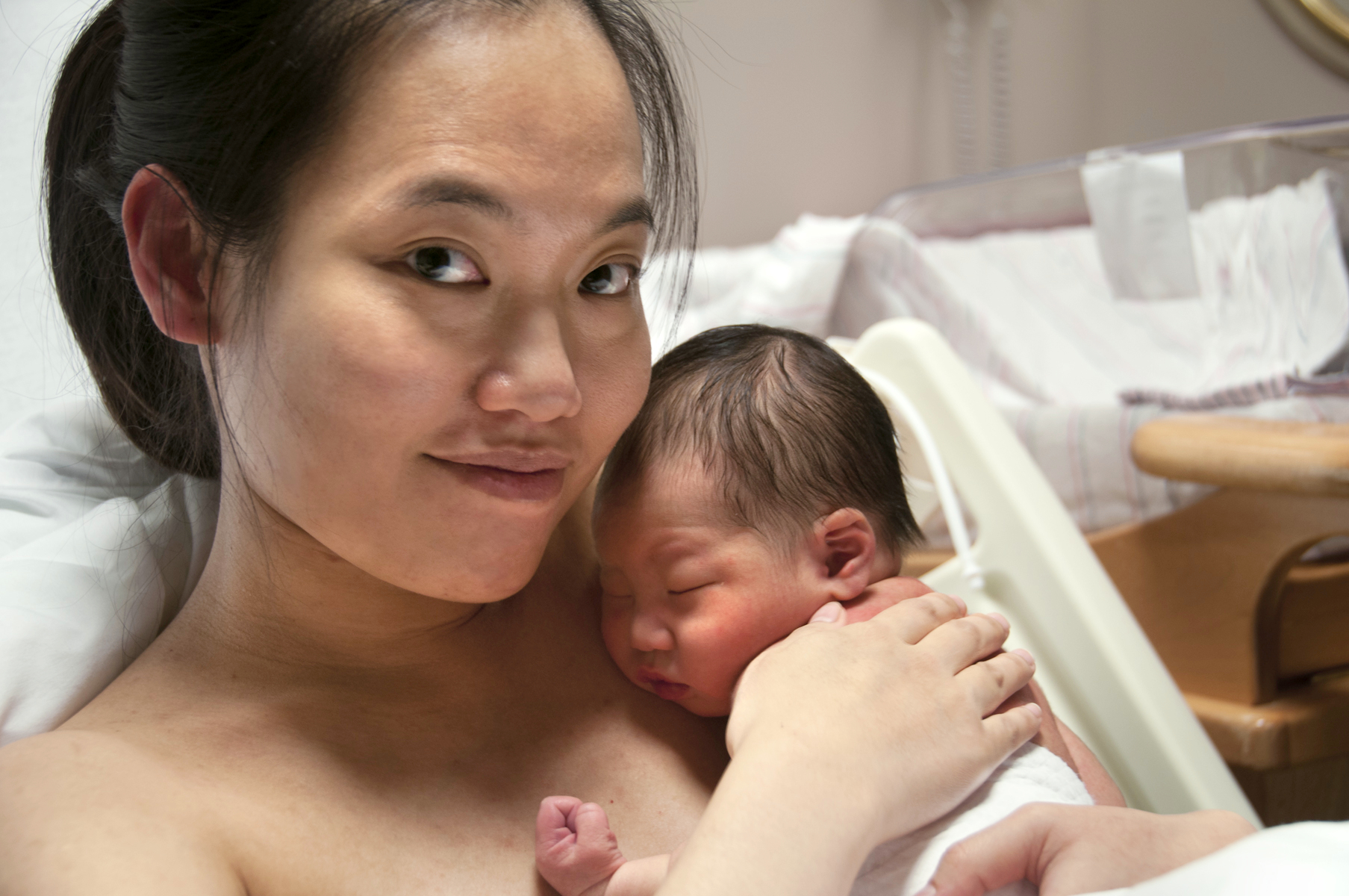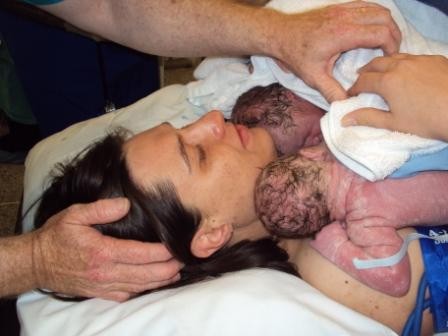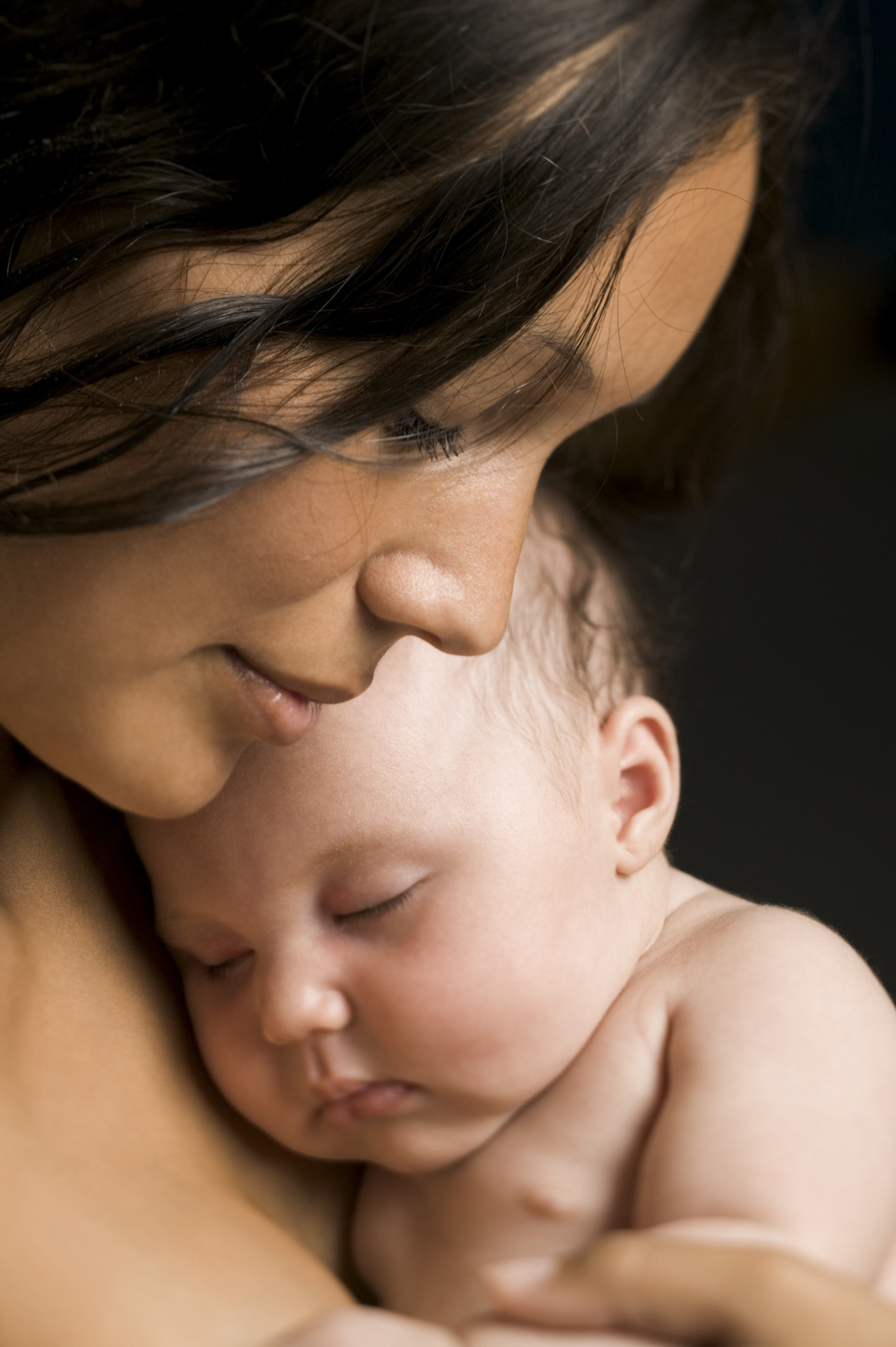I remember the feelings of relief and joy that flooded in after giving birth. It was truly rewarding! After months of waiting I was finally able to meet and hold my little one.
The truth is, it’s just as natural for your baby to want to be near you as it is for you to want to be near them. After birth your baby is placed on your chest. They can smell you, are warmed by you and they calm down and settle with the help of your comforting presence.

On your chest your baby is dried off, a clean blanket is placed over baby, and your healthcare provider can listen to your baby’s heart and breathing while your baby is comfortable on your skin. Your baby can stay on your chest for a couple of hours or until after the first feeding or as long as you like. Part of what makes this experience so special and beneficial is the skin-to-skin contact between you and baby.
I missed the opportunity for skin-to-skin contact immediately after the birth of my first baby. After the birth she needed resuscitation and was taken to the nursery. I was able to hold her for the first time 12 hours later. My second child was swaddled in a blanket and given to me. I asked the healthcare provider to unwrap him so he could be skin-to-skin. He stopped crying and shortly after began to feed. Third time was the charm as my third child was placed skin-to-skin immediately after birth. It was by far, the most peaceful experience for me, and obviously comforting for my child.
The more skin-to-skin contact, the better. Babies wear only a diaper, and may wear a hat if needed. Skin-to-skin contact is best if started at birth, but is helpful at any time.

A mother’s chest is the baby’s “habitat” as Nils Bergman says. According to Nils, skin-to-skin contact is:
- A place where baby is cared for
- Our biology – babies do this automatically when with their mother
- Helpful for baby’s brain development
- Helpful for breastfeeding – babies move to the breast and feed
- Normal – mom and baby are meant to be together
- Good for partners – partners can do it too. Partners keep babies warm and baby’s heart rate and breathing are steady.
- For all newborns – all babies benefit from skin-to-skin contact, including formula fed babies and babies born by c-section:
- Especially helpful for preterm babies. This is called Kangaroo Mother Care:
Did you know?
Skin-to-skin warms babies up when they are cold and cools babies off when they are too hot. It keeps their blood sugar levels, heart rate and breathing normal. Babies kept skin-to-skin have just the right oxygen levels. During skin-to-skin contact, babies even feel less pain from injections.
Babies held skin-to-skin are calmer, have lower stress hormone levels, cry less, lose less weight and feed better and more often. What’s more, very low birth weight babies are more likely to survive when kept skin-to-skin.

After the first few hours and days, skin-to-skin continues to be valuable, improving your mood during the first two months and increasing breastfeeding rates at three months. Some call the first few months the “fourth trimester”, as your baby adjusts to life outside the womb. What better place to do this than on your chest? What’s great is that as a mom you put your baby on your chest because it just feels right, your baby is calm and you feel relaxed and confident.

To help get the word out about the importance of holding your baby skin-to-skin I encourage you to enter our contest. Tell us one benefit of holding your baby skin-to-skin for a chance to WIN a baby wrap or a nursing tank top!
To enter, send us your answer by replying to one of @KIDSLINEOnline’s skin-to-skin tweets or email s2s@wdgpublichealth.ca by October 7th, 2015. Click for contest details.
